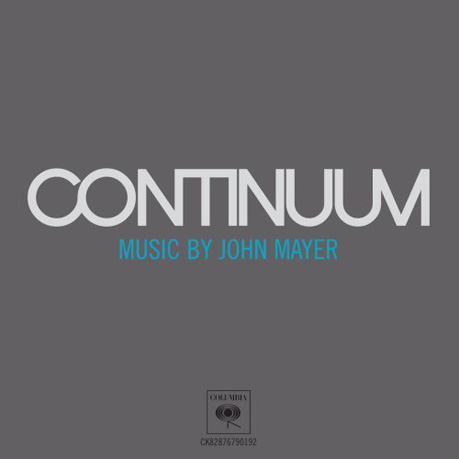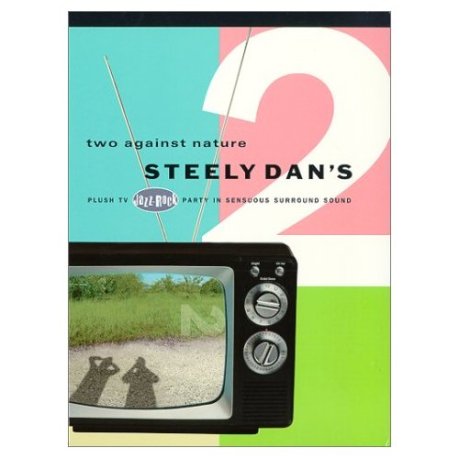music review: continuum
September 15, 2006

How refreshing, I thought to myself as I reached the end of bluesy rocker John Mayer’s recent release Continuum, his first studio project since 2003’s Heavier Things. Mr. Mayer has aged since his 2001 debut, and with this album eases into a laid back, barebones style of musicianship that befits his increased maturity. It’s grown-up music, crafted with care for an audience that has grown up with him. How refreshing.
The first track, the popular, catchy single “Waiting On the World To Change,” starts things off with a lively beat very reminiscent of his earlier work, reminding us once again (for those who had forgotten) of Mayer’s outstanding prowess with the guitar and introducing us to his talented bassist Pino Palladino and drummer Steve Jordan. It is also an overtly political, depressingly pessimistic bit of music with a message designed to appeal to the young and “disenfranchised,” though to rouse the slumbering from their complacency would be a most formidable feat, as “Waiting” is but the latest in a long line of high-minded music that has, thus far, failed to generate much more than airplay and a spot on the iTunes top 10 list. Still, the consummate musicianship and impeccable engineering make it well worth a listen or twenty.
Blowing past the next cut, the distastefully repetitive “I Don’t Trust Myself,” we arrive at two standouts: “Belief,” an inventive, questioning tune also aiming to politicize; and “Gravity,” a mellow, sentimental version of the ballad first heard on the 2005’s John Mayer Trio album Try!. The latter especially is hauntingly beautiful, its spare melodies perfectly complementing Mayer’s angsty, impassioned vocals. “The Heart of Life” is next, and while some may find it sickeningly sentimental, it works well as a throwback to earlier days of musicianship, aided by the fact that the track sounds as if it had been recorded inside some sort of hollow chamber (rather like many old LPs).
The funky “Vultures,” also of Mayer’s trio work, has a vaguely seventies vibe reminiscent (to me) and honoring of early Steely Dan material, but the soporific “Stop This Train” is so generic as to be almost entirely forgettable. Not so with “Slow Dancing In A Burning Room,” a ballad of love, loss, and all that good stuff. But seriously, its sincerity and earnestness, combined with Mayer’s divine musical sensibilities, make it one of the best on the album. Next is a personal favorite, a cover of the great Jimi Hendrix’s “Bold As Love,” which provides Mayer with the chance to show us how close he may be to his idol’s legendary skills; his enthusiasm is infectious.
A piano introduction to “Dreaming With A Broken Heart” at first brings to mind a less classy version of Norah Jones, and when Mayer chimes in sans guitar I started to wonder what, exactly, he was up to. I need not have worried, as it turned out, as his skills as a vocalist rescue what might have been a mushy oddity of a song; it’s an intriguing departure from much of the rest of the album. While the Coldplay-ish “In Repair” is blandly pleasing, the final track, “I’m Gonna Find Another You,” ends the disc well with another vintage-sounding, carefully-crafted performance featuring Mayer and a delightfully jazzy brass section; the ending is classic, with his last words dying out over a few simple guitar chords: there’s magic to be found in that.
What is notable about Continuum is not that every song impresses; quite a few do not, as should be evident from the above, though this fact is hardly extraordinary among albums in general. Rather, the thrill of hearing–and, in concert, watching–Mr. Mayer do what he so obviously loves, and do it so well, blots out the rough spots with the glint of the studio lights reflecting off his guitar as he strums it feverishly. When Continuum succeeds, it does so spectacularly. That is enough to make it a worthy continuation of Mr. Mayer’s musical career and, more significantly, among the best albums released this year.
–D. S. W.
reviews coming soon
September 11, 2006

Today I anticipate receiving a review copy of John Mayer’s new album Continuum, with a review to follow relatively soon. I will also be screening Paul Greengrass’ United 93 this evening and will probably have a few things to say about it afterwards (you never can tell). Stay tuned for that, and of course for the inevitable deluge of Apple news and rumors surrounding tomorrow’s media event.
–D. S. W.
review: john mayer/sheryl crow philadelphia
September 3, 2006

Near the midpoint of last evening’s sold-out concert in Camden, New Jersey, featuring “adult contemporary” artist Sheryl Crow and bluesy rocker John Mayer, I realized that I was perhaps not the best person to be reviewing such a performance. As I watched two middle-aged women tango in the nearby aisle while Crow belted out the seventh or so in a long set of hits–to the delight of the audience–my unfamiliarity with her work combined with a dawning realization of my complete ignorance of Mayer’s career-launching first album to cast the upcoming hours in a drearily humdrum light. It was loud, the wind was picking up, and the light sprinkle of rain threatened to turn into something far more sinister. Would I risk hearing loss and face overpriced concessions for naught?
Opener Mat Kearney (one “t”) started things off promptly at 7 PM with a completely undistinguished collection of U2/Coldplay-ish guitar chords and keyboard riffs strung together by remarkably verbose utterances that could have been quite interesting, had I been able understand more than two of every ten words. Yes, the amplification system of this particular concert had the unfortunate effect of drowning out lyrical subtleties in throbbing waves of sternum-shaking, low-end noise. Kearney could have yelled his way over it, as Crow and Mayer did later, but then that didn’t seem his style.
One of the weaknesses of multi-act shows is the downtime required for the changeovers. In this case, Crow took a full forty minutes to erect her massive projection screens and tune her string section before things were ready to resume after Kearney had exited the stage. Then, with a flash of light and no small amount of screaming from the thousands of adolescent girls in attendance, she began to sing…something that sounded very ordinary. Relieved of any pent-up enthusiasm for Crow’s performance, I began to notice the constantly changing images on the screens behind her.
They were nifty, I decided. Very nifty.
In fact, the graphics on those immense white squares were far more interesting to me than nearly anything she sang that night. Abstract, swirling circles became swaying trees became panning street maps of American cities, always moving and fancifully imaginative. Aside from one dreadfully “political” number accompanied by supposedly inspirational quotes by Gandhi, Teddy Roosevelt, and others, I was rarely bored by Crow’s time in the spotlight, though it did go on for too long certainly wasn’t what I had come expecting to see. Well-known popular favorites like “Soak Up the Sun” and “If It Makes You Happy” even offered the opportunity for a chummy and silly, if a bit hollow, sing-along.
But then at last Crow set aside her guitar and departed; we were indeed “ready for some John Mayer,” a response to her teasing inquiry, though more waiting was in order before the shaggy-haired one would greet the eager throng (myself included). Workers shuffled about the crowded stage, removing the screens and hoisting large grids of squares into their place. After a half-hour or so, shadowy figures took their places, cheers and shouts flowed freely, and an effortlessly cool John Mayer started the evening’s main event off with a suitably boisterous, crowd-pleasing rockathon.
Not that I knew what it was, of course (probably a cut from Mayer’s first album Room For Squares, I decided). As a showcase for Mayer’s formidable talents, it was at least enjoyable on a technical level if not an emotional one. The next few were in the same vein: foreign, yet still exciting. Finally, “Bigger Than My Body”, off his second studio effort Heavier Things, came up, and I was captivated as Mayer improvised a dazzling solo that liberated the music from the constraints of the studio track, which seemed in that moment incredibly archaic and artistically lifeless by comparison; an artist’s conception of a piece changes moment to moment, I realized in that revelatory flash of insight.
It would continue for quite a while, as the hit parade continued for the next hour: “Daughters,” “Gravity,” “Waiting on the World to Change,” and “Clarity” came and went in a blur of old and new tunes. The jazzy bit towards the end of the latter was outrageously, unreasonably good, better even than on the album (where its brilliance thrills me time and again). It, the rest, and the others whose memory escapes me provided enough musical electricity to erase entirely my doubts, making them in hindsight both foolish and faithless. He is John Mayer, after all, a guitarist often likened to Jimi Hendrix in sheer talent.
With a “Good Night!” and a cheery wave, Mayer exited the stage just before 11:00. The applause continued for a good two minutes before he trotted back onto the stage for another round, with solo acoustic guitar this time. The soulful “Find Another You,” from his upcoming album Continuum, was delightfully spare and intimate, bearing all the hallmarks of his best work. The band then returned to show off several more new pieces, most of which intrigued (though a few had me checking my watch alarmingly often).
By 11:15 the final chords were fading, the crowd was roaring, and the evening’s pleasures were still wonderfully fresh in my mind as I scurried off towards the exit. It had been, I later ruminated, quite a time.
–D. S. W.
review coming soon
September 2, 2006

I have tickets this evening to a concert by John Mayer, who is touring to promote his soon-to-be-released album Continuum; a review will follow sometime tomorrow. I will also be reviewing the album itself once it is released on September 12th, so watch for that as well. A low-quality stream of the tracks is available from Clear Channel Music here, including the single “Waiting on the World to Change,” but I’ll wait for the full-resolution release before passing judgment.
Update 9/3: I’ve changed the attached picture to a more neutral one. (I’ll save the cover art for the album review.) Also, it appears that Clear Channel has removed access to audio streams for all tracks except “Waiting.” You will just have to keep waiting (pardon the pun) until the 12th, it seems. Finally, the concert review has been posted here.
–D. S. W.
review: two against nature
August 10, 2006

In January of 2000, jazz-rock masters Donald Fagen and Walter Becker recorded a private concert for a lucky few fans at Sony Music Studios in New York City, playing both classics from their voluminous discography and new material for their then-upcoming Two Against Nature album, the first for Steely Dan in twenty years. After the concert aired on PBS’ In The Spotlight series, Image Entertainment released it on VHS and DVD, the latter release featuring a wonderful DTS 5.1 surround track. For Dan fans new (that’s me) and old, this release offers much of the fun of a concert experience, but with superior sonics and intimacy.
Even at 52, Donald Fagen’s voice, at once both playful and sinister, comes through clearly from the very first track (an updated take on fan favorite “Green Earrings”). Sporting his trademark close-cropped hair and tinted glasses, he and partner Becker are accompanied on this musical romp by a cadre of superbly talented musicians, including guitarist Jon Herington and the late, great saxophonist Cornelius Bumpus. The tone of the performance is lighthearted at times, somber at others, and always intriguing, not least because the performers are clearly having a ball in their seemingly effortless waltz through decades of Dan history.
Nearly as entertaining as the music are the interspersed interviews with enthused attendees, backup singers, and instrumentalists, who provide anecdotes of their own experiences with the band’s music and offer wildly varying interpretations of its meaning and inspirations. Together, they offer viewers tantalizing yet frustratingly limited glimpses at the sources of Steely Dan’s immense popularity. And then there are the segments with Fagen and Becker, whose refusal to take most anything seriously–except for the music, of course–manifests in hilariously deadpan non-responses to interviewers’ questions and is fully realized in a series of mock-public-access-television “interviews” in a blindingly white room between the duo and various musicians. You’ll have to stifle a chortle when the overhead boom microphone begins frantically waving to-and-fro, and it’s eccentricities like this that make the disc such a peculiarly wonderful thing to see.
On the technical side, the concert is capably shot in digital video, though with camera angles whose extremity can raise an eyebrow from time to time. Happily, the editors take pains to ensure that all areas of the band, from Fagen and Becker to the cornet and trombone players, receive adequate coverage, and in any case it is far above what you would experience at a live concert. Fagen is still the undisputed star of the recording, however, demonstrating again and again his mastery of the piano and defining command of each piece’s impossibly convoluted musical progression. Dolby Digital 5.1 and 2.0 audio options included, but both are outmatched significantly by the aforementioned DTS 5.1 track, which sounds nearly as good as the band’s impeccably engineered albums.
The whole experience is a singularly thrilling one which could easily induce a strong desire to attend one of Steely Dan’s live concerts. If so, take note: the band is currently on tour throughout the United States, details of which can be found at their website (which is well worth a visit besides). Alas, circumstances have conspired to prevent this reviewer from taking part, so I will have to settle for this quintessentially authentic facsimile. Not a bad compromise at all, in my estimation.
–D. S. W.
music review: a wonderful world
August 4, 2006

It looked good. After reading a recent article in the Times praising the integrity of jazz great Tony Bennett in the face of a veritable morass of disposable pop, the “Grammy-nominated” album of duets by Bennett and k.d. lang–she prefers it written that way–entitled A Wonderful World seemed like just the thing to take myself back, back to that era of breezy romance that I never knew but that jazz singers can’t keep from rhapsodizing about. “Inspired by the legendary Louie Armstrong,” Lang and Bennett have an easy, jovial rapport right from the opening number, “Exactly Like You”, encouraging the listener to forget his cares and hum along (by someone’s estimation, these tracks are “standards”).
The most memorable tribute to Armstrong’s legacy is “What A Wonderful World”, with this version concluding with some rather amusing banter about the man himself. Lang and Bennett have likely never sounded better; at no time did I question their formidable reputations as icons in their own right. Yet while both artists are clearly in their element and having a ball together, the disc somehow manages to come of as…dull. If jazz can be criticized for all sounding alike, it’s albums like this that deserve the label. With minimalist accompaniment and unimaginative arrangements, all the tracks run together, failing to distinguish what ought to have been a brilliant collaboration from Lang and Bennett’s vast catalog of past efforts.
Sound quality is another distressingly prominent issue. The entire album seems cloaked in a thick layer of gauze, with fine detail nearly nonexistent. Unseemly crackles and pops generate precisely the wrong sort of nostalgia and are inexplicable given superproducer T Bone Burnett’s engineering prowess; in all, it pales in comparison to such phenomenal releases as Diana Krall’s Live in Paris. And it had such potential.
But I forget how easy it is to criticize. In truth, listening to Bennett, still crooning away after all these years, is a magical experience even without the exceptional packaging we might have expected. That alone is enough to ensure that I’ll be enjoying this one for a long time to come.
–D. S. W.